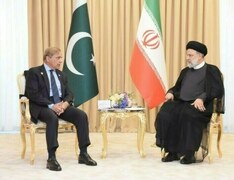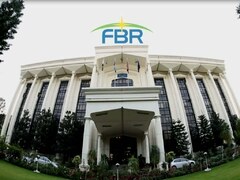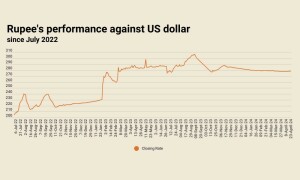KARACHI: The sluggish trend remained continued in the local cotton market after the Eid. The trading volume remained very thin on Tuesday. Market sources told that situation likely to be improved in the month of June after starting of new season.
Cotton Analyst Naseem Usman told that after the Eid holidays with the partial arrival of Phutti for the season 2021- 22 the trading for the new season has started in the cotton market.
Naseem Usman told that up till now buying and selling of Phutti from the areas of Sindh which includes Badin and Gharo were recorded. He told that ginning factories of Punjab bought Phutti at the rate of Rs 5300 to Rs 5500 per 40 kg. Moreover, a ginning factory of Burewala had sold 200 bales of cotton at the rate of Rs 12500 per maund on the condition of delivery between June 10-20. Sources claimed that two ginning factories of Sanghar will partially start their operations from 1st week of June.
Naseem told that according to the information received up till now the sowing of cotton in the cotton production areas of Sindh and Punjab is satisfactory. The Federal Agriculture Committee has set the target of production of approximately one crore five lac bales for the year 2021-22.
Moreover, ICE cotton futures edged up from an over one-month trough on Monday, with a weaker dollar offsetting continued pressure from forecasts for rain in West Texas this week.
Cotton contracts for July rose 0.08 cent, or 0.10% to 82.51 cents per lb by 12:41 p.m. EDT, but held in a tight range of 82-83.57 cents a lb.
Recent rains in the top US cotton producing region West Texas have provided a boost to the crop, prompting the natural fiber to shed over 9% from an over 2-month peak scaled earlier this month.
“This weekend’s rain should get them (West Texas) started with planting and that means that the USDA’s crop estimate is now more realistic than maybe a week ago,” said Peter Egli, director of risk management at British merchant Plexus Cotton, adding that a weaker dollar provided some support for prices.
The US Department of Agriculture (USDA), in its May World Agricultural Supply and Demand Estimates (WASDE) report last week projected a 2.4 million bale increase to US production in the 2021/22 marketing year.
But, “the problem is we didn’t get a lot of subsoil moisture and we have top soil moisture now, so that means there’s a requirement for (more) frequent rain to keep the planting going,” Egli added.
Helping cotton rise, the dollar weakened against a basket of currencies, making greenback-denominated U.S cotton more expensive for buyers in other currencies.
Speculators cut net long positions in cotton futures by 1,841 contracts in to 56,891 in the week to May 11, data from the US Commodity Futures Trading Commission showed on Friday.
Naseem further said that that sowing of cotton has registered a significant increase this year in South Punjab due to the incentives given to the farmers by the Punjab government, said an official of the Punjab Agriculture Department.
Official said it was heartening to note that the farmers were taking keen interest in sowing cotton this year as compared to last year. “Reports of cotton crop sowing are pouring in from the South Punjab, right from the first week of April which are according to the wishes of the Punjab government”, the official said.
He said that crop of cotton was mostly being sown in Bahawalpur, Multan, Lodhran, Bahawalnagar and Rahimyar Khan Khanewal, Layyah, Sahiwal districts. Mahar Mahboob, a farmer from Layyah, said that he preferred to sow cotton in fields this year rather than other crops, adding that the present government was taking initiatives for the farmers. To a question, he said that cotton was a beneficial crop as the government was giving different incentives to the farmers. He also confirmed that the farmers were taking more interest in sowing the cotton as compared to the last year in the southern Punjab.
It is also pertinent to mention here that the Federal Committee on Agriculture has fixed white lint production target for the country at 10.5 million bales from an area of 2.33m hectares for the 2021/22 season, almost double over the previous year.
Punjab is to sow the crop on 1.6m hectares of land to produce 6.07m bales. The Agriculture Department has issued a schedule for sowing of registered cotton varieties and advised the growers to complete the sowing of registered BT cotton varieties between April 1 and May 31. The BT cotton varieties recommended by the department include IUB-13, MNH-886, BS-15, Niab-878, and FH-142. The growers have been asked to consult local experts if they plan to sow other registered BT cotton varieties keeping in view the environment of their district to get better production.
The patron-in-chief of All Pakistan Textile Mills Association (APTMA) Gohar Ejaz asked the government for continuation of Regionally Competitive Tariffs of $6.5/mmbtu of Gas/RLNG and 7.5 cents/kWh of electricity.
“On our request Imran Khan’s government reposed its confidence in the textile industry, providing the government’s complete support,” he said.
As a result, Pakistan’s Textile Exports foresees to increase considerably i.e., $16.5 billion during FY21 in comparison to the exports in FY18 which were $13.5 billion and will continue to grow up to $20 billion in June 22, he said. Making a total of $27 billion in exports in June 21 and $30 billion in June 22, he added.
He said Regionally Competitive Energy Tariffs policy proposed by Pakistan Institute of Development Economics (PIDE) has played a vital role in the current year’s exports and is critical to sustaining enhanced exports, employment and bring in new investment.
Textile industry has capitalized on the given incentives to help the government achieve the ultimate aim of export maximization, job creation and the realization of economic prosperity. Pakistan’s export industries (including textiles) witnessed an exceptional growth of 9 percent in the first nine months of FY21. The increase in export demonstrates the competitiveness of Pakistan’s exports –when inputs are provided at regionally competitive prices, exports were achieved despite an unfavourable international environment. “The industrial electricity tariff of our competitors is much lower than Pakistan making us uncompetitive in the increasing market competition,” he said. “Our objective to become an export ‘powerhouse’ cannot be achieved until power tariffs are revised to a competitive and stable level.”
Industry fears that the power sector will not be able to deliver on a sustained stable and competitive basis which will negatively impact market sentiments. Competition is the key principle for the development and expansion of the industrial market.
The spot rate remained unchanged at Rs 11300 per maund. The Polyester Fiber was available at Rs 200 per kg.
Copyright Business Recorder, 2021
























Comments
Comments are closed.